Email: vgarthnorman@gmail.com
Or fill out the form below and we will
contact you shortly.
Email: vgarthnorman@gmail.com
Or fill out the form below and we will
contact you shortly.
TOURS:
2020 – June 21 Solstice Tour (June 21-June 30)
2018 – Jason Jones & Family Tour – July-August.
2016 – Mexico Tours by Carlos Cruz Fernandez. June.
2011
July – Mayas to Izapa 2nd Tour – www.themayaconservancy.org.
Garth and Cheryl Norman participate in another series of Mayan Ceremonies. Join us for a spiritual experience with the Mayans and see the famous Stela 5 “Tree of Life” monument at the Izapa Temple Center.
December 3-4, 2010 – “Dia de la mujer en el calendario maya” Izapa, Mexico and Momostenango, Guatemala. Mayan Elders presented the “Day of the women” ceremonies at the ancient Izapa Temple Center.
October, 2010 – “Batz” Ceremony – Momostenango, Guatemala. www.themayaconservancy.org
June, 2010 – “Mayas to Izapa” Tour www.themayaconservancy.org Antigua, Guatemala to Izapa, Mexico visiting Iximche, Abaj Takalik, Momostenango, Lake Atitlan and Izapa, Mexico where 13 Mayan Elders performed the 260-day Mayan Ceremonies.
Feb. 23-March 1, 2009 www.bountifultravel.com (Click on “Please check out our full list. . .”) and go to Izapa and the Tree of
Life BMAF Conference
, (Click “Full Details”) Guatemala and Mexico travel with Archaeologist Garth Norman
November 23-December 1, 2009, Guatemala / Mexico Tour. ARCON, Inc. V. Garth Norman Lecturer.
LECTURES:
March 31, 2011 — Society for American Archaeology
(www.saa.org) — Sacramento, California. Lecture by V. Garth Norman – “Izapa – the Birthplace of the Maya Calendar”.
April 24-28, 2010 – Society for American Archaeology – (www.saa.org) –St. Louis, Mo. Lecture by V. Garth Norman on Calendar inscriptions at the Izapa Temple Center, Mexico.
Nov. 27, 2009, Tapachula University – Power Point Lecture on Izapa Archaeo-astronomy by V. Garth Norman
April, 2009, Society for American Archaeology, (www.saa.org) — Atlanta, GA. Lecture by V. Garth Norman on Calendar dates at the Izapa Temple Center,
Mexico.
August 15-17, 2008 Atlantic Conference Lecture in Halifax, Nova Scotia www.atlanticconference.org Power Point Lecture: “Geometry and Measure in ancient Mesoamerica”.
October 18, 2008
BMAF Conference Lecture in Salt Lake City, Utah www.bmaf.org Power Point Lecture: “Geometry and Measure in ancient Mesoamerica”.
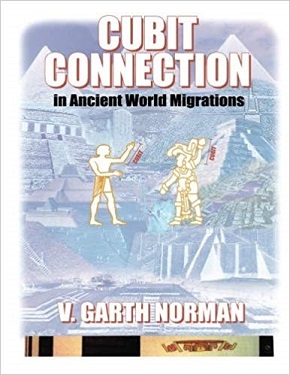 Cubit Connection in Ancient World Migrations. (www.amazon.com) Evidence of ancient trans-oceanic migrations, as required by the Book of Mormon. Archaeologist V. Garth Norman has traveled world-wide since the 1980’s compiling data revealing the transport of ancient Mesopotamian and Egyptian standard measures & geometric design formats from the third millennium B.C.E. by land and sea across the Americas & the Orient that prevailed in Mesoamerica and Peru for nearly three millennia. Jim Reed, Editor of the Institute of Maya Studies states: “Garth Norman has proven trans-oceanic connections between the civilizations of the ancient Americas and the Middle East by revealing the use of the Babylonian & Egyptian cubits, and geometric design used to build the pyramids, architecture, and art of the antiquities in the Americas.” 160 pages, 240+ color photos, 12 tables, World Antiquities Chronology Timeline, & Bibliography.
Cubit Connection in Ancient World Migrations. (www.amazon.com) Evidence of ancient trans-oceanic migrations, as required by the Book of Mormon. Archaeologist V. Garth Norman has traveled world-wide since the 1980’s compiling data revealing the transport of ancient Mesopotamian and Egyptian standard measures & geometric design formats from the third millennium B.C.E. by land and sea across the Americas & the Orient that prevailed in Mesoamerica and Peru for nearly three millennia. Jim Reed, Editor of the Institute of Maya Studies states: “Garth Norman has proven trans-oceanic connections between the civilizations of the ancient Americas and the Middle East by revealing the use of the Babylonian & Egyptian cubits, and geometric design used to build the pyramids, architecture, and art of the antiquities in the Americas.” 160 pages, 240+ color photos, 12 tables, World Antiquities Chronology Timeline, & Bibliography.
Izapa Sacred Space: Sculpture Calendar Codex (Above)- Birthplace of the Maya Calendar by V. Garth Norman- Archaeologist, Epigrapher, Archaeo-astronomer (2012). Izapa is the Birthplace of the Sacred Maya 260-Day Calendar which is measured at Izapa from August 13 to April 30. The book has 280 pages replete with original photos by the author of Izapa stelae, line tracings and site maps and illustrations. Also, most recent RTI digital photo of Stela 5 “Tree of Life” monument that verifies the original 1965 photos and Norman’s original photos and drawings. (Order English Edition on: www.amazon.com — Order Spanish Edition–on right–from vgarthnorman@gmail.com)
Izapa – A Self-Guided Tour Book (English & Spanish) by V. Garth Norman 2010 – Printed in Guatemala City, Guatemala. Available by contacting: vgarthnorman@gmail.com
Izapa Sculpture: Album (1973) & Text (1976). Papers of the New World Archaeological Foundation in 2 Volumes (#30 Album and Text). Provo. (www.amazon.com) (For lowest price: email-vgarthnorman@gmail.com)

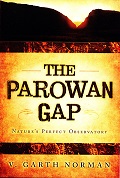 The Parowan Gap-Nature’s Perfect Observatory by V. Garth Norman. Cedar Fort Publications, Springville, 2007. (www.amazon.com)
The Parowan Gap-Nature’s Perfect Observatory by V. Garth Norman. Cedar Fort Publications, Springville, 2007. (www.amazon.com)
Izapa Archaeoastronomy by V. Garth Norman, Brigham Young University, Provo, 1980. (www.amazon.com)
ARTICLE IN:
The Golden Section-Nature’s Greatest Secret by Scott Olsen. Walker Publishing Co., Inc. NY, NY 2006; Designed and typeset by Wooden Books Ltd., Glastonbury, UK. (www.amazon.com)
www.amazon.com.
Izapa located at 15° North Latitude: birthplace of the “SACRED 260-DAY CREATION OF MAN” Calendar–discovered by Dr. Vincent Malmström (1973, 1997–Cycles of the Sun, Mysteries of the Moon: The Calendar in Mesoamerican Civilization).
1. The “SACRED 260-DAY CREATION OF MAN” Calendar began at Izapa, Mexico’s 15° North Latitude (Olmecs: 1600-500 BC; Izapa-Mayas: 550 BC-400 AD) & taken in 100 BC to Teotihuacan, Mexico, & Nazca, Peru-at 15° South Latitude, & to all Mesoamerica, & later to Parowan Gap, Utah, USA (700 AD).
2. BABYLONIAN & EGYPTIAN CUBITS from the Middle East were used to create the art & architecture of the Izapa Temple Observatory & most other ancient Mesoamerican Temples.
3. Carbon Dating at IZAPA: Olmec Civilization (1600 BC-500 BC) Izapa-Maya Civilization (550 BC-400 AD); Maya Civilization (200-1000 AD).
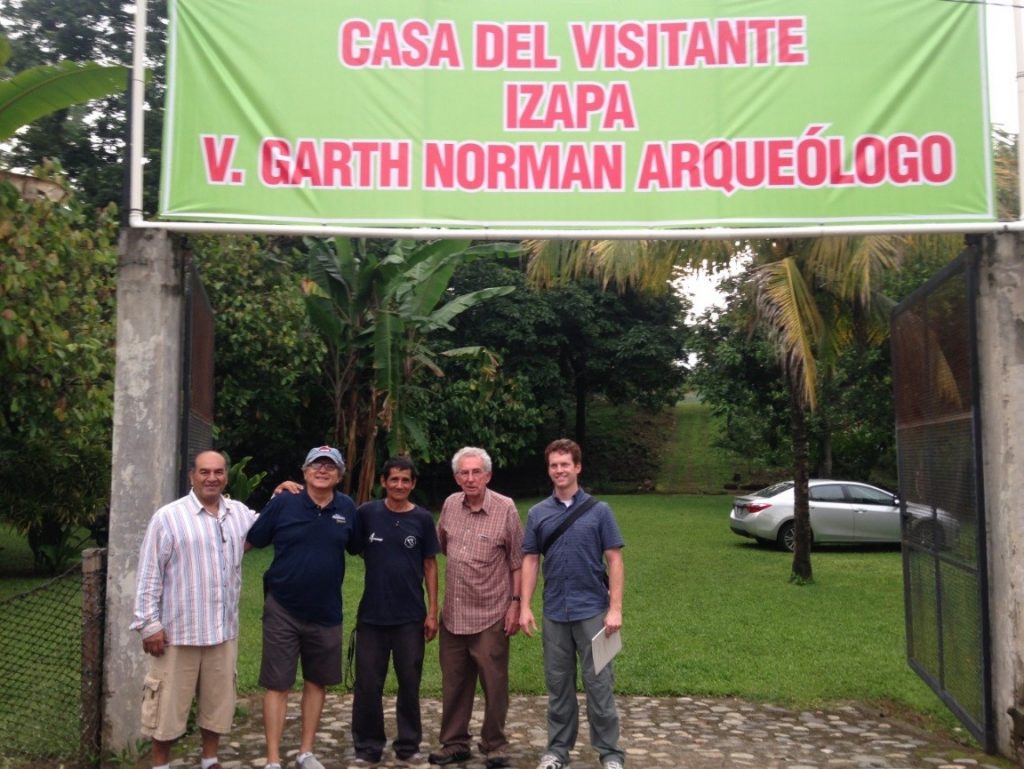
L-R: Sergio Navas, Rudolfo Juan Flores, Alberto, Garth Norman, Jason Jones
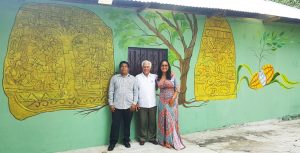 Izapa Visitor Center: Artist Israel Ramos, Owner Antonio D’amiano Atristain & wife Mirna Janet standing in front of the new Center.
Izapa Visitor Center: Artist Israel Ramos, Owner Antonio D’amiano Atristain & wife Mirna Janet standing in front of the new Center.
So.Mexico-West Guatemala’s POPOL VUH states that their ancestors CAME FROM THE OTHER SIDE OF THE SEA. (Recinos 1950: 5, 77-80) — VIDEO
https://www.youtube.com/watch?v=BovXbt14Eso#t=14
June 20-27, 2010 The Maya Conservancy (Georgeanne Johnson-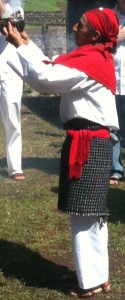 President) sponsored a tour with 13 Quiche and a dozen Maya scholars.
President) sponsored a tour with 13 Quiche and a dozen Maya scholars.
Quiche Mayan Elders performed their sacred 260 Day Count “CREATION OF MAN” ceremony at Izapa in 2010 for the first time in 1,000 years. Right – Rigoberto Itzep clothed in Ceremonial white with headscarf, shawl, apron, and sash. He burns incense as he blesses the Izapa Temple Center.
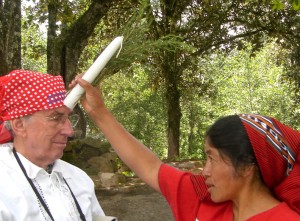 Blessing the body from head to toe.
Blessing the body from head to toe.
Click LINK for Power Point of new 2018: IZAPA VISITOR CENTER-1-3pptx [Autosaved]
The Antiquities of Mesoamerica were constructed using BABYLONIAN and EGYPTIAN CUBITS (First reported by Garth Norman at the Sixth Palenque Round Table, 1986, Palenque, Chiapas, Mexico)
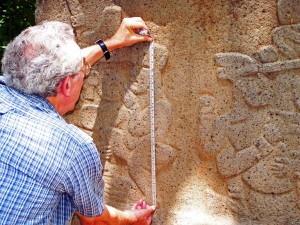
Olmec (1500 BC- 500 BC) LaVenta Park, Mexico Stela carving was created using the Royal Babylonian Cubit.
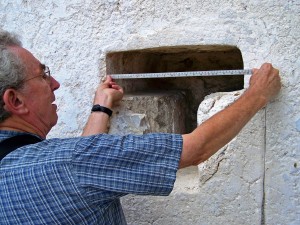
Maya (200 AD- 800 AD) Palenque Palace, Mexico – T Window created with Babylonian Cubit measurements.
Popol Vuh: “Great were the descriptions and the account of how all the sky and earth were formed . . . and the MEASURING-CORD was brought, and it was stretched in the sky and over the earth, on the four angles, on the four corners, as was told by the Creator and the Maker . . .” (Recinos 1950: 5, 78-80).
www.amazon.com
Mesoamerica Formative era major sites: 1500 B.C. to 250 A.D http://www.utexas.edu/cofa/art/347/347m_map.html#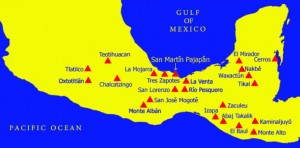
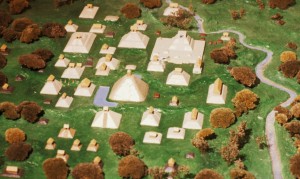
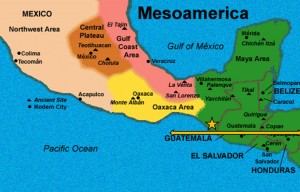 OLMEC——IZAPAN*——MAYA 1500 BC——-500 BC——-200AD
OLMEC——IZAPAN*——MAYA 1500 BC——-500 BC——-200AD“E” (above)=position of the Zenith Sun Passages on August 13 & April 30 on Izapa’s eastern horizon. Yellow in the circle below shows the 260 days measured between the two appearances of the Zenith Sun Passage at Izapa when there are no shadows at noon.
“260 Days is the 9 month creation, gestation, zenith cycle ending with the birth of a human baby–the summum bonum of all creation” (Norman 2015:90).
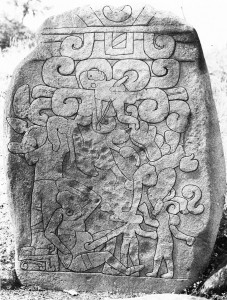
Stela 8 (above) begins 260 days (human gestation time) Stela 10 (right) shows a spirit child in clouds descending to its pregnant mother by a Tree of Life at end of the 260 day Count.

EDUCATION AND EXPERIENCE SUMMARY
Advanced Degrees-Brigham Young University: 1980-MS Anthropology/Archaeology; 1976-MA Ancient Studies. Research Specializations: Mesoamerican Civilization-Izapan Culture, Epigraphy, Archaeoastronomy, Geometry & Measure; Great Basin Prehistory-Rock Art and Astronomy; Middle East & Mesoamerica. Arrangement and supervision of major archaeological research projects.
SELECTED ARCHAEOLOGICAL RESEARCH TRAVEL
SUMMARY OF PROFESSIONAL WORK EXPERIENCE
Over 40 years of professional archaeological research experience and cultural resource contract work in the Intermountain West and in Mesoamerica. Authored over 250 professional papers and contract reports. Director of Archaeoogical Research Consultants since 1982. Author of numerous archaeological research papers and reports. Leading Mesoamerican scholar in iconographic research of Izapan culture. Research associate with BYU New World Archaeological Foundation, 1965-1976 with publication of the 2 volume monograph on Izapa Sculpture (Paper #30, 1973, 1976). Indian Area LDS EDucation Coordinator in Nevada and Arizona 1965 to 1976. Traveled the world pursuing studies in North America, Latin America, Europe, the Middle East and Asia.
PROFESSIONAL ORGANIZATIONS & SYMPOSIUMS
Traveled widely and participated in numerous professional archaeological symosiums in
the USA, Canada, Mexico, Europe. Member American Anthropological Association (AAA),
Society for American Archaeology (SAA), and Utah Professional Archaeological Council. Participant in Anthropological Symposiums with Cambridge University in England, Sorbonne University in Paris, Harvard University, Dumbarton Oaks, University of Texas, Santa Fe Archaeoastronomy Conference, Palenque Roundtable, Maya Meetings, National University of Mexico, University of Maryland, International Congress of Americanists, Utah Professional Archaeological Council (UPAC), American Rock Art Research Association (ARARA), Great Basin Conference, Society for Early Historic Archaeology, Ancient America Foundation, Brigham Young University.
CULTURAL RESOURCE WORK EXPERIENCE
Extensive field experience in identification, evaluation, and reporting of prehistoric and historic cultural resource sites, with expertise in basic lithic and ceramic identification and in rock art analysis of Archaic, Fremont, Anasazi, and Shoshonean sites (1977 to present).
ARCHAEOLOGICAL RESEARCH CONSULTANTS (ARCON)
Director, Principal Investigator, and Archaeological Consultant for cultural resource evaluations for private and government contracts in the Intermountain West (1982 to present). Discovered the first sun-oriented and shadow-calendar petroglyphs in Utah at three sites in the Book Cliffs and Uintah Basin, and reported at the Great Basin Conference in 1980 (“Identifying Solstice and Equinox Petroglyphs in North-eastern Utah and Their Cultural Relations”). Norman introduced his rock art solar calendar research method the same year to the Utah Rock Art Research Association with positive results. He researched and documented numerous other calendar petroglyph and observatory promontory sites across the Colorado Plateau over the next decade before starting the Parowan Gap project (1993-2003) culminating in the publication The Parowan Gap-Nature’s Perfect Observatory (CFI-available Amazon.com).
Major government cultural resource contracts completed with ARCON include: An Evaluation of Ten BLM Land Tracts for Section 203 Sale in Northern Utah (Contract No. UT-910-CT3-434: 1984), and a State Lands Survey for a chaining project at the Indian Peak State Game Preserve (No. U-89-AK-485a; 1989).
Major private cultural resource contracts completed include a Tar Sands Survey in the Sunnyside area for Edison Power; a survey for I-80 Construction in Box Elder County, Utah; Coal Lease subsidence surveys in Central Utah; various surveys for I-70 Construction in Central Utah; Canal Rehabilitation and road construction surveys in Duchesne and Uintah Counties; a Will Tell Fiber Optic Cabel Survey in Juab and
Millard Counties sub-contract with Nickens and Associates.
Sub-contracts completed with AERC include the 1990-91 Capitol Reef Park Service field survey, Seismic Surveys in San Juan and Grand Counties, and in northwestern Colorado; a Seep Ridge Road Construction Survey in Uintah and Grand Counties; a Coal Lease survey in East Mountain for
Utah Power and Light; and extensive drill location, access road surveys and mitigation excavations for Conoco Oil Company in Rio Blanco County, Colorado.
MINORITY ENTERPRISE SERVICE ASSOCIATES (MESA) CORP.
Manager Cultural Resources. Manager, Principal Investigator, and Archaeological Consultant for cultural resource evaluations for private and government contracts in Intermountain West and North Dakota (1980-82). Planning, Monitoring, and control of contract research projects. Supervision of up to 20-person staff in field survey, library research, laboratory analysis, and report preparation work.
Specialized in major government contracts for the Bureau of Reclamation and Bureau of Land Management.
Cultural Resource contracts completed include: Class I Survey of the Central Utah Area; Flaming Gorge Peaking Power Project; Duchesne River Area Canal Rehabilitation Program; Portions of the UPALCO Unit; Steinaker Reservoir Land Sales; Starvation Reservoir Land Sales; Deer Creek REservoir Land Sales; and Diamond Fork Reservoir.
ARCHAEOLOGICAL ENVIRONMENTAL RESEARCH CORP. (AERC)
Archaeologist and Field Director for AERC (1977-1980). Participant in numerous cultural resource evaluations and industrial development projects under government and private contracts throughout Utah, Nevada, Wyoming, Colorado, and Idaho. Major Cultural Resource Surveys include: Survey Director for the BLM Natural Buttes Project in northeastern Utah (94 40-acre sample units); Survey Director and co-author for the BLM Mapco River Bend Study (109 40-acre sample units). Participating archaeologist in test excavations conducted by AERC near Jensen (1978), Mt. Carmel Junction (1980), and in the Sawtooth Mountain Locality of Idaho (1980).
BYU NEW WORLD ARCHAEOLOGICAL FOUNDATION (NWAF)
Research Associate/Archaeologist (1965-1977). Conducted Izapa (Mexico) monuments study involving field work and extensive library research. The effort culminated in publication of a two volume 450-page monograph, Izapa Sculpture & Album (1973, 1976), recognized as a major pioneering study of iconography, cultural history, religion, and myth of Izapan (pre-Mayan) civilization. Publication Coordinator and Museum Displays Production (1975-1976). Coordinated publication of Monograph for NWAF. Designed and produced museum educational displays.
Brigham Young University, Department of Archaeology–Archaeologist. Member of a five-person team conducting a reconnaissance in Mexico to locate sites for subsequent intensive evaluation, 1964. Participating archaeologist in excavation of Hinkley Fremont site populations, 1965-1976.
Additional work & hobbies:
Private Pilot, 1969-1973.
Finish Carpenter, 1955-present (periodic).
Sergeant, U.S. Army, 1953-1954- Korean War
V. Garth Norman – AWARDS: https://izapa.co/asociados-arqueologia/
ARCON, Inc. Archaeologist, Archaeo-Astronomer, Epigrapher–Director, Principal Investigator. Norman has specialized in Epigraphy and Archaeoastronomy of Izapa and its monuments for over 50 years. Norman’s pioneering study of Izapa Sculpture for the New World Archaeological Foundation resulted in three publications (4,5,6 below). His current Izapan studies are rewriting Formative Mesoamerican history and their influence through migrations to South and North America (2 below). Norman holds graduate degrees in Ancient Studies and in Archaeology-Anthropology from Brigham Young University. He has participated internationally with numerous professional symposiums, most frequently with the Society for American Archaeology (SAA). He has lectured at the National Museum of Anthropology and History in Mexico City on the “Origin of the Maya Calendar at Izapa” (August 17, 2012), and given lectures from 2010 to 2018 in Tapachula & Tuxtla Chico, Chiapas, Mexico. Garth and his wife Cheryl have a posterity of 32. Norman’s books are listed for sale on www.amazon.com.
Cubit Connection in Ancient World Migrations (2018) Amazon.
Izapa Sacred Space: Sculpture Calendar Codex (2015) Birthplace of the Maya sacred 260-Day Calendar. BYU Press, Provo.
Izapa Espacio Sagrado: El Codice Calendarico de las Esculturas (2016) Lugar de origen del calendario Maya. Cumorah Press, Guatemala City, Guatemala.
Izapa – A Self-guided Tour Book (2010) in English & Spanish. Cumorah Press, Guatemala City, Guatemala
Astronomical Orientations of Izapa Sculptures. (1980) Original sightings of Izapa Sculptures, Mounds and Monuments to the eastern horizon sun, moon, star and planet rises. BYU Press, Provo
Izapa Sculpture Text (1976); New World Archaeological Foundation. Leading authority in iconographic research of Izapan (early Maya) culture. BYU Press, Provo.
Izapa Sculpture Album (1973); New World Archaeological Foundation. Leading authority in iconographic research of Izapan (early Maya) culture. BYU Press, Provo.
The Parowan Gap-Nature’s Perfect Observatory. (2007) where the Izapan 260-Day sacred calendar was defined in petroglyphs and with rock cairns. Cedar Fort Press, Springville, Utah.
Parowan Gap Archaeological Project, Preservation Enhancement (1993-2004). Major project with federal and private funding under contract with Parowan City and Iron County. Conducted archaeological preservation-enhancement study of the famous Parowan Gap petroglyph site. Emphasized archaeology and archaeo-astronomy investigations of petroglyphs and related sites.
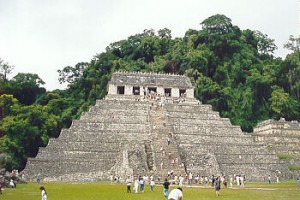 Palenque ruins exhibit the Mesoamerican Standard Measure and Geometric planning discovered in 1980 by Garth Norman. The excellent precision drawings of Palenque panels by Merle Green Robertson, Linda Schele, and Alfred Maudslay, made my task of checking geometric structure in the five major Palenque slab sculptures a truely rewarding exercise. The Palenque panels express an unsurpassed vitality for utilizing the geometric mandala frame with great variety of artistic creativity. The consistency of their golden mandala formats seem self evident. Divisions in the Palace hieroglyphic panel (below) were obviously dictated by the underlying Golden Mandala format. The center point was interestingly reserved for reference to the ancestral King Pacal in the text. Centers on all carvings are easily located between base and side mandala border references. The open top (except Sarcaphogus lid below), seems to refer to the unbound sky as expressed on Izapa sculptures in upward sloping sky panels. The composition of the Foliated Cross panel to my Golden Mandala reconstruction (as with other Palenque panels) appears self evident.
Palenque ruins exhibit the Mesoamerican Standard Measure and Geometric planning discovered in 1980 by Garth Norman. The excellent precision drawings of Palenque panels by Merle Green Robertson, Linda Schele, and Alfred Maudslay, made my task of checking geometric structure in the five major Palenque slab sculptures a truely rewarding exercise. The Palenque panels express an unsurpassed vitality for utilizing the geometric mandala frame with great variety of artistic creativity. The consistency of their golden mandala formats seem self evident. Divisions in the Palace hieroglyphic panel (below) were obviously dictated by the underlying Golden Mandala format. The center point was interestingly reserved for reference to the ancestral King Pacal in the text. Centers on all carvings are easily located between base and side mandala border references. The open top (except Sarcaphogus lid below), seems to refer to the unbound sky as expressed on Izapa sculptures in upward sloping sky panels. The composition of the Foliated Cross panel to my Golden Mandala reconstruction (as with other Palenque panels) appears self evident. 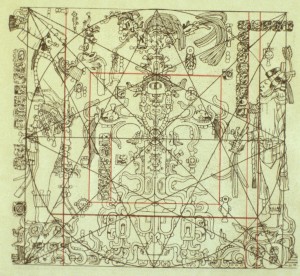
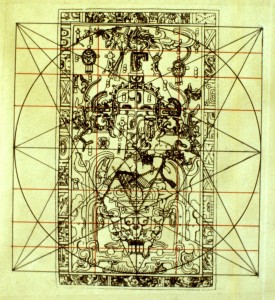
The perfection of the Golden Mandala composition is reflected in mirror images and glyph columns on opposite sides of sculptures that conform to geometry lines. The composition and theme of Pacal’s Sarcaphogus Lid carving are distinctly rooted in the Izapan tradition, best manifest on Izapa Stela 5. This Palenque carving is unsurpassed in Mesoamerican art for its beauty in expressing immortality. I believe the geometry dramatizes that theme. In addition to the conch, Pacal is being lifted by the long-lipped masks beneath his foot and in back of his head. Pacal is in the midst of flowering through the action of the sun (Kin glyph) on the crown of the earth monster. He sits directly on a budding blossom. Death is evident in the Cimi glyph at the right, but life out of death is manifested in the tri-partite leaf plant projecting from it. As with most dramatic death scenes at Izapa (Stelae 12 and 50), the focus of death here is unmistakably toward a subsequent heavenly ascension.
Measurements of antiquities at Palenque
Further evidence is added through measurements of Palenque sculpture (Classic Maya) during a 1986 field study and from excellent scaled drawings of Merle Greene Robertson. Life size stucco-ed Maya figures on temple wall panels and pillars have hands and fingers curved in gestures for the full forearm length to be measured along the back of the hand and around the fingers. Regardless of the different gestures, forearms of four out of the six intact figures in the Palace are the same length–49.5 cm. Babylonian Cubit. An added surprise came in finding that intact feet on these figures are consistently half the arm length (24.75 cm.) indicating that the foot acts in conjunction with the arm as a standard measure.
A double Royal Babylonian Cubit is found on forearms of the carved giants in the north court of the Palace, and a smaller carved figure in that court measures a full RB Cubit – 49.5 cm.
Other measures reveal the RB Cubit was used in Palenque architecture. Some T-shaped windows in the Palace are exactly 1 RB Cubit high and 1 RB cubit wide. Others that differ may have been the work of less skilled masons. Four out of six hieroglyphic panels in the west wall of the Palace’s north court are one RB Cubit square.